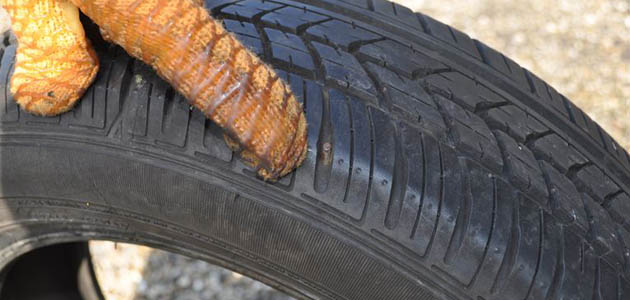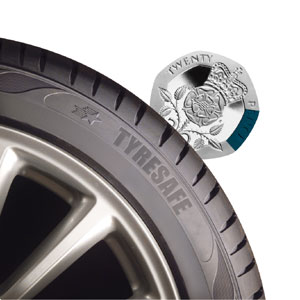
Nearly three quarters of drivers across the UK are potentially unprepared for any heavy rainfall this winter and at an increased risk of being involved in an accident, according to a new survey carried out by tyre safety campaign group TyreSafe.
Just 27% of drivers claimed that they had checked their tyre tread depth in the last month, the maximum period recommended between checks, and a staggering one in five admitted that they had never checked them.
“Without adequate tyre tread depth, your car may be unable to cope properly in wet conditions, causing problems such as longer stopping distances, loss of grip and even an increased risk of aquaplaning,” explains Stuart Jackson, Chairman, TyreSafe. “Last winter was the wettest on record and it’s essential that motorists check their tread depth at least once a month to ensure they can cope with any similar weather which we may experience again this year.”
Current UK law requires car tyres to have a minimum of 1.6mm of tread depth yet more than a quarter of those questioned thought the legal limit was less than this. Underlining the level of ignorance regarding tyre safety laws, more than 80% respondents were unaware that the maximum possible fine for driving on an illegal tyre with insufficient tread depth is £2,500.
Most drivers (80%) were aware of the phenomenon of aquaplaning, a dangerous situation caused by lack of tread depth on wet roads, where the car’s tyres lose complete contact with the road surface, leaving the driver without any control. However, more than half of drivers stated that they would react in a manner that would either make matters worse or have no effect on an aquaplaning car, such as pressing the brake to slow down.
“Avoiding wet weather problems such as aquaplaning, can be easily achieved by regularly checking your tyre tread depth,” adds Jackson. “It’s a very simple and quick job to do yourself – all you need is a 20p coin.”
Simply place a 20p coin into the main tread grooves of the tyre. If the outer band of the 20p coin is obscured when inserted, then your tyre tread depth is above the legal minimum limit. However, if the outer band is visible when inserted into the tread, your tyres may be unsafe or illegal and should be checked immediately by a tyre professional. When checking your tread depth, ensure you check at least three locations around each tyre.

In the film below a car with low tyre tread depth can be seen aquaplaning on a flooded road surface, dangerously continuing to travel in a straight line despite the driver turning the steering wheel furiously in an attempt to make the car change direction.
For more information about any aspect of tyre safety, visit www.tyresafe.org.









